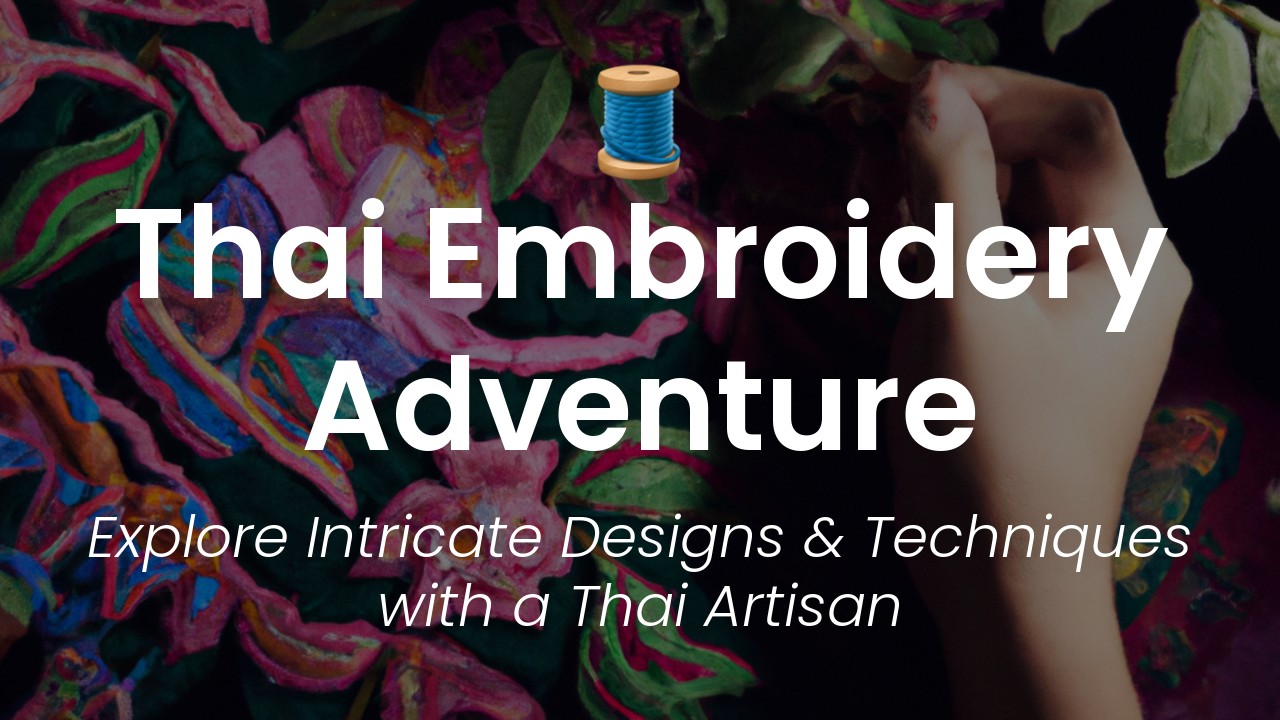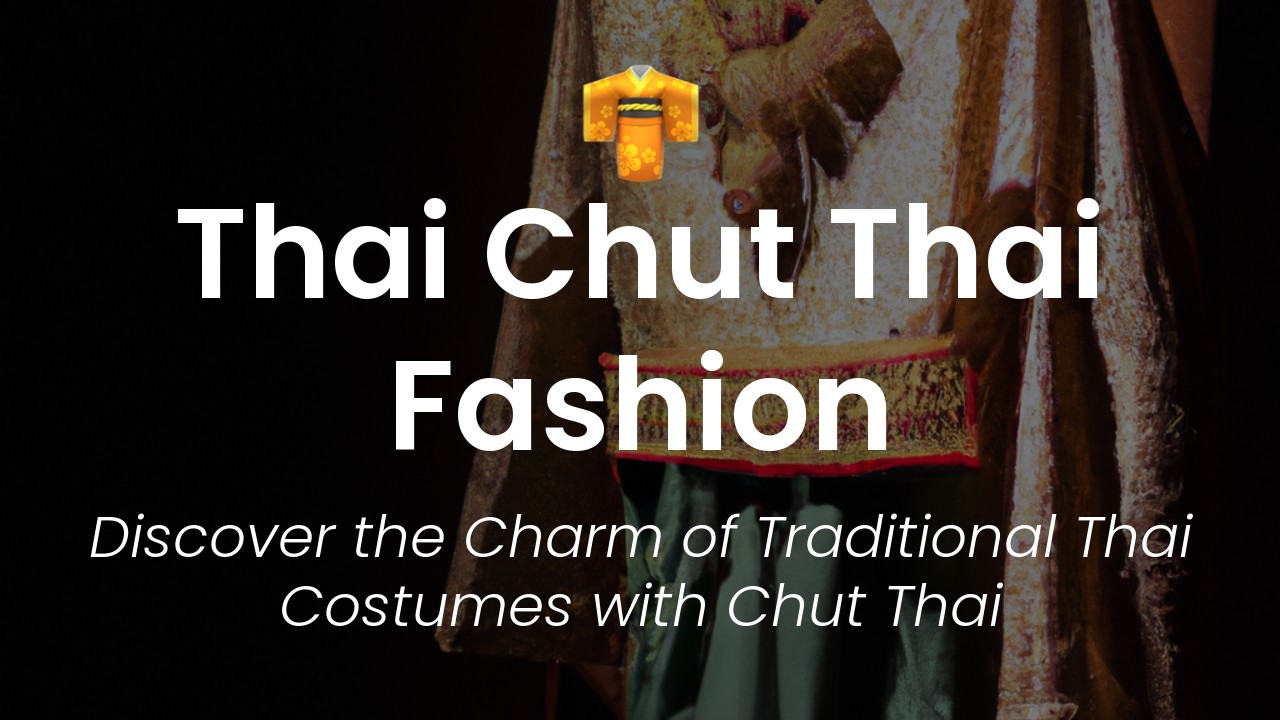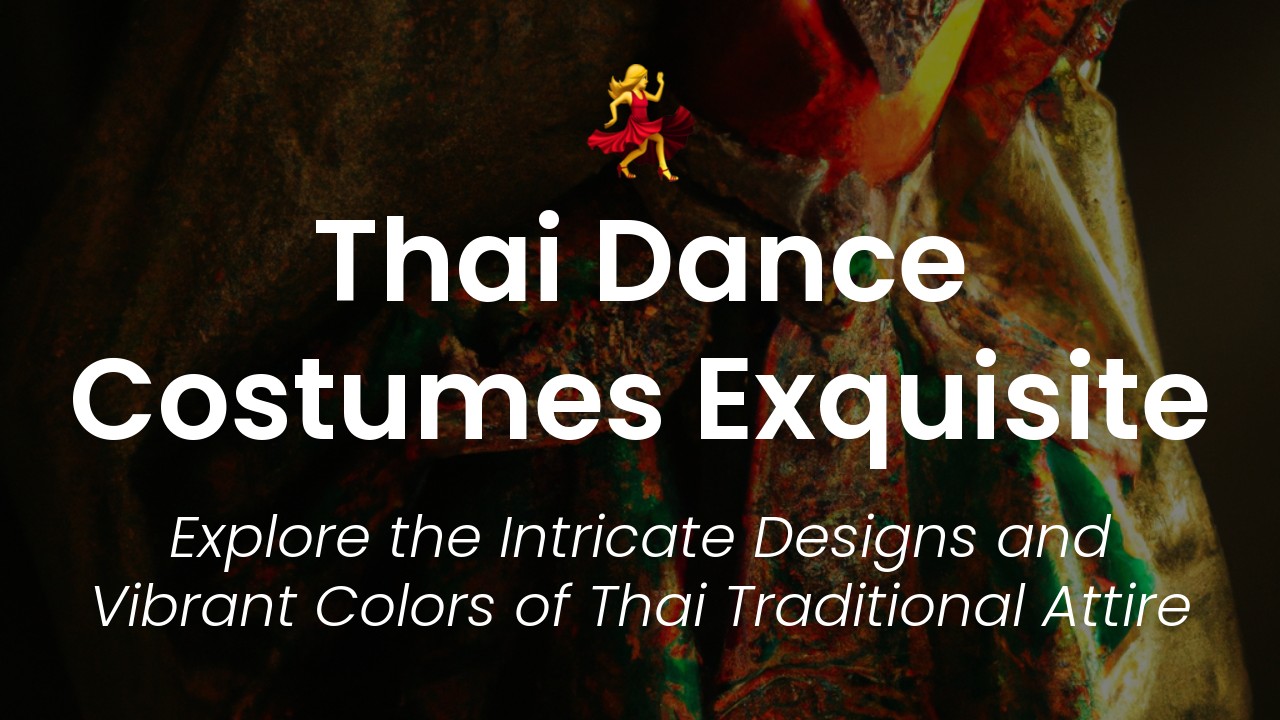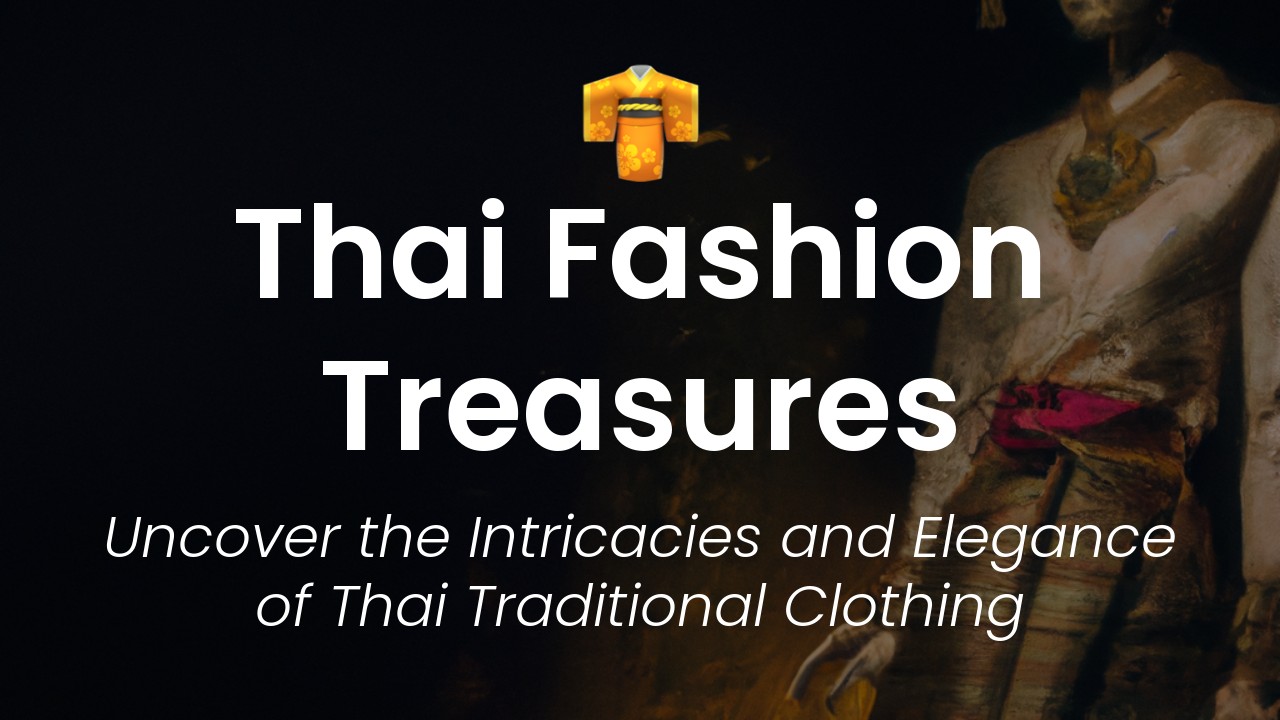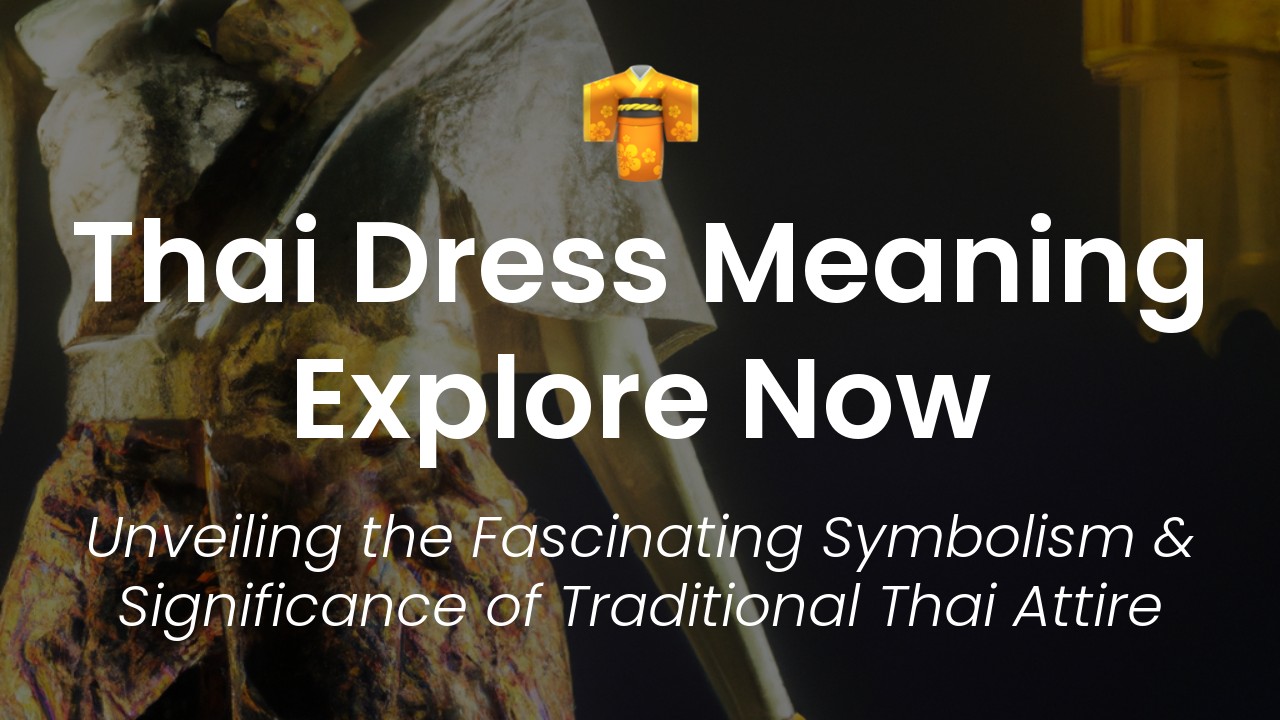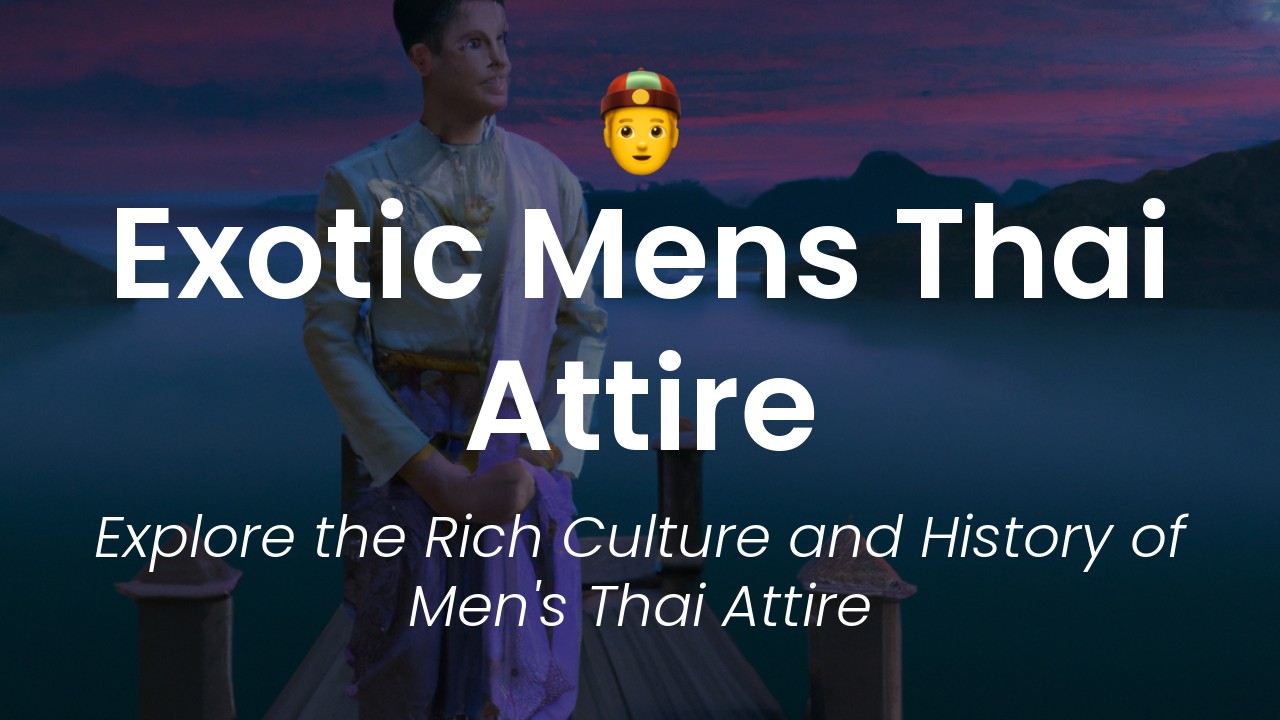As a young woman from Thailand, I have always admired the rich cultural heritage we have inherited from our ancestors. One such tradition that fascinates me is traditional Thai embroidery, an art form that thrived in Thailand for hundreds of years, and still does today.
Embroidery is not just an art form for Thai people. It's a way of life that reflects the beliefs, values and aspirations of our ancestors. The intricate designs and colors used in this embroidery are a testament to the skill and creativity of the Thai people. This art form is so deeply ingrained in our culture that every region of Thailand has its own unique embroidery style.
Thai embroidery is not just about making beautiful designs, it's a reflection of the rich history and cultural diversity of our country. From the delicate flowers in the northern Lanna style to the bold geometric shapes in the southern Phuket style, every embroidery pattern encapsulates a unique aspect of Thai culture.
In this article, I will take you on a colorful journey through the history of traditional Thai embroidery. We will explore the various regional styles and learn about the techniques used in this art form. Join me on this journey of discovery and let's appreciate the beauty and intricacy of Thai embroidery together.
History of Thai Embroidery
Thai embroidery is a centuries-old art form that has been passed down from generation to generation. It originated in the Kingdom of Ayutthaya, which was the capital of Thailand from 1350 to 1767. During this time, Thai embroidery was considered a prestigious art form reserved for the royal family and the nobility.
In the beginning, Thai embroidery was primarily used on traditional clothing such as sarongs, gauntlets, and pha sin, which are wraparound skirts worn by women. The embroidery on these clothing items was not just decorative but had symbolic meanings as well. For example, elephants, lotus, and garuda birds were embroidered onto clothing to signify power, beauty, and a connection with the divine.
Materials Used in Thai Embroidery
The materials used in traditional Thai embroidery vary depending on the region and the style being worked. However, there are some common materials that are used across the board.
The most commonly used thread for Thai embroidery is silk thread. The silk thread is made by hand, and the colors are derived from natural dyes. The embroidery needles are also traditionally made from bamboo, which is a durable material that doesn't damage the silk thread.
Other materials used in Thai embroidery include gold and silver threads, beads, sequins, and mirrors. These materials are often used sparingly to add a touch of glamour and sparkle to traditional clothing.
Techniques of Traditional Thai Embroidery
There are several techniques used in traditional Thai embroidery, each with its own unique style and method. Some popular techniques include:
-
Pha Khao Ma – This technique is used to create a checkered pattern and is commonly found on the borders of skirts. The pattern is created by using two different colored threads and alternating between the two to create a checkered design.
-
Chetrachin – This technique involves using gold and silver threads to create intricate patterns. This technique is commonly found on wedding dresses and other ceremonial clothing.
-
Chok – Chok embroidery is done using silk thread and involves outlining the pattern on the fabric first. The thread is then sewn into the fabric at an angle, creating a raised effect.
- Dokmai – This technique is used to create flower patterns and involves layering silk thread to create a 3D effect.
Designs and Symbols in Thai Embroidery
Like most traditional art forms, Thai embroidery is full of symbolism and meaning. Each design and symbol used in Thai embroidery has a unique meaning behind it, and the colors used can also convey different emotions and feelings. Here are some common designs and symbols found in Thai embroidery:
-
Elephants – Elephants are a symbol of power and strength in Thai culture. They are often embroidered onto traditional clothing to show off one's status and influence.
-
Lotus – The lotus flower is a symbol of purity and enlightenment in Thai culture. It is often used in religious ceremonies and is embroidered onto clothing to show off one's connection to the divine.
-
Garuda Bird – The Garuda bird is a mythical creature with the head of an eagle and the body of a man. It is a symbol of protection and is often embroidered onto clothing to ward off evil.
- Geometric Patterns – Geometric patterns like squares, diamonds, and circles are commonly found in Thai embroidery. These patterns are designed to represent stability, balance, and beauty.
Significance of Thai Embroidery in Thai Culture
Thai embroidery is an essential part of Thai culture. It represents the country's rich history and heritage and is a symbol of prestige and beauty. Embroidered clothing is often worn during traditional ceremonies and is considered a sign of respect and reverence.
Additionally, Thai embroidery serves as a source of income for many families in Thailand. Embroidery artisans often work from home and sell their pieces in local markets or to tourists. This form of traditional craftsmanship helps preserve Thailand's culture and ensures that it continues to be passed down to future generations.
Contemporary Application of Thai Embroidery
While traditional Thai embroidery is still widely used and appreciated in Thailand, contemporary designers have also found new ways to incorporate embroidery into their work. Embroidered patches, shoes, and bags have all become popular items in recent years.
Thai embroidery has also been used by fashion designers to add an exotic and luxurious touch to their clothing. In 2018, famous fashion designer Gucci released a line of bags that featured traditional Thai embroidery patterns.
Where to Learn and Buy Thai Embroidery Pieces
If you're interested in learning more about Thai embroidery or purchasing a piece for yourself, there are several places you can go in Thailand. Local markets like Chatuchak Weekend Market in Bangkok or the Night Bazaar in Chiang Mai are great places to find embroidered pieces.
If you're interested in learning the art of Thai embroidery yourself, there are several embroidery schools in Thailand that offer courses and workshops. These schools will teach you everything you need to know about the art of Thai embroidery, including techniques, materials, and history.
Conclusion
In conclusion, traditional Thai embroidery is an intricate and beautiful art form that has been passed down through generations in Thailand. The materials, techniques, and designs used in Thai embroidery all have significant cultural and historical meanings that make the embroidery an essential part of Thai culture. While traditional embroidered clothing is still commonly worn in Thailand, contemporary designers are also finding new ways to incorporate embroidery into their designs, making it a timeless art form that continues to thrive in modern times.

